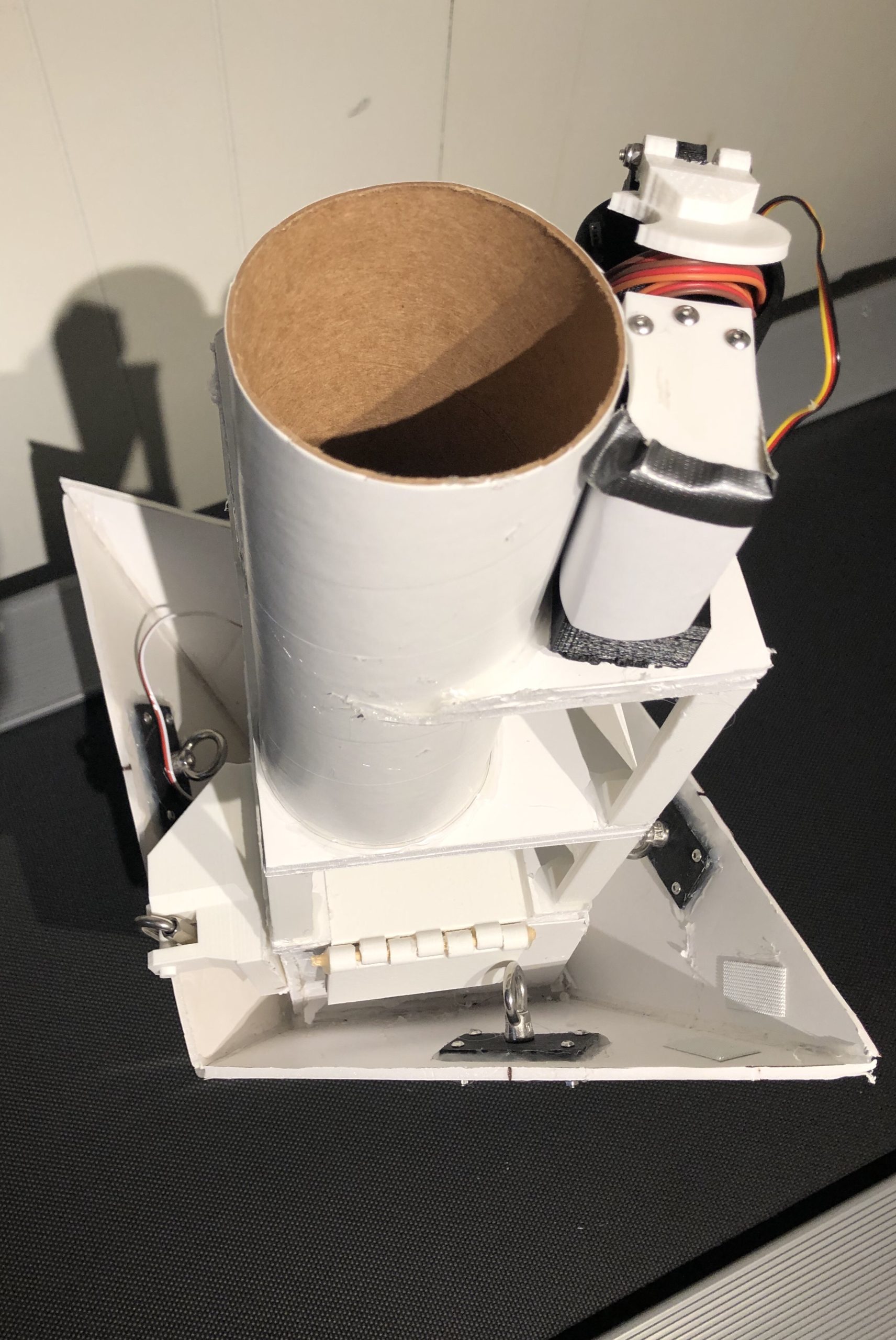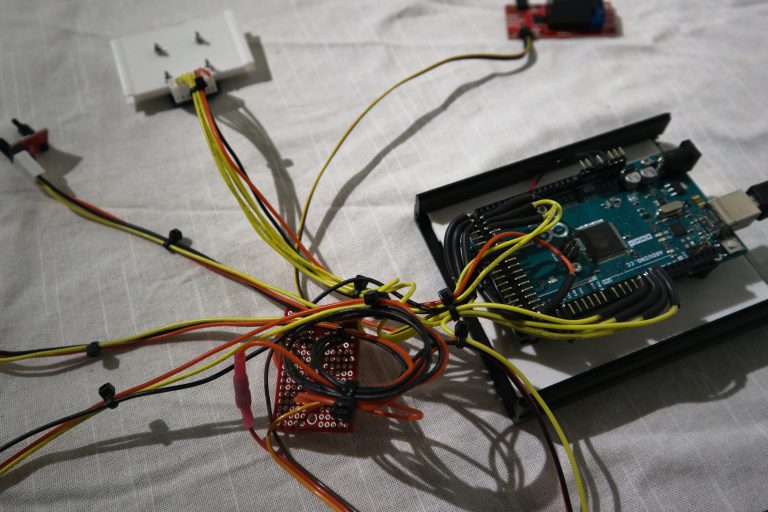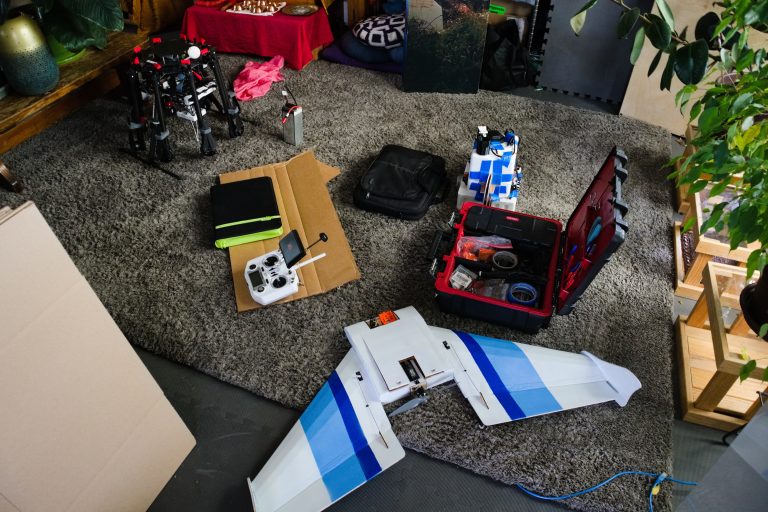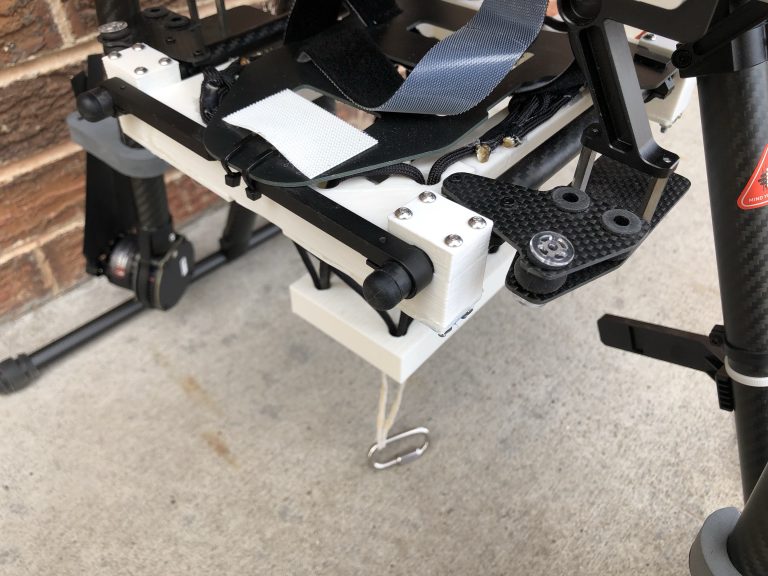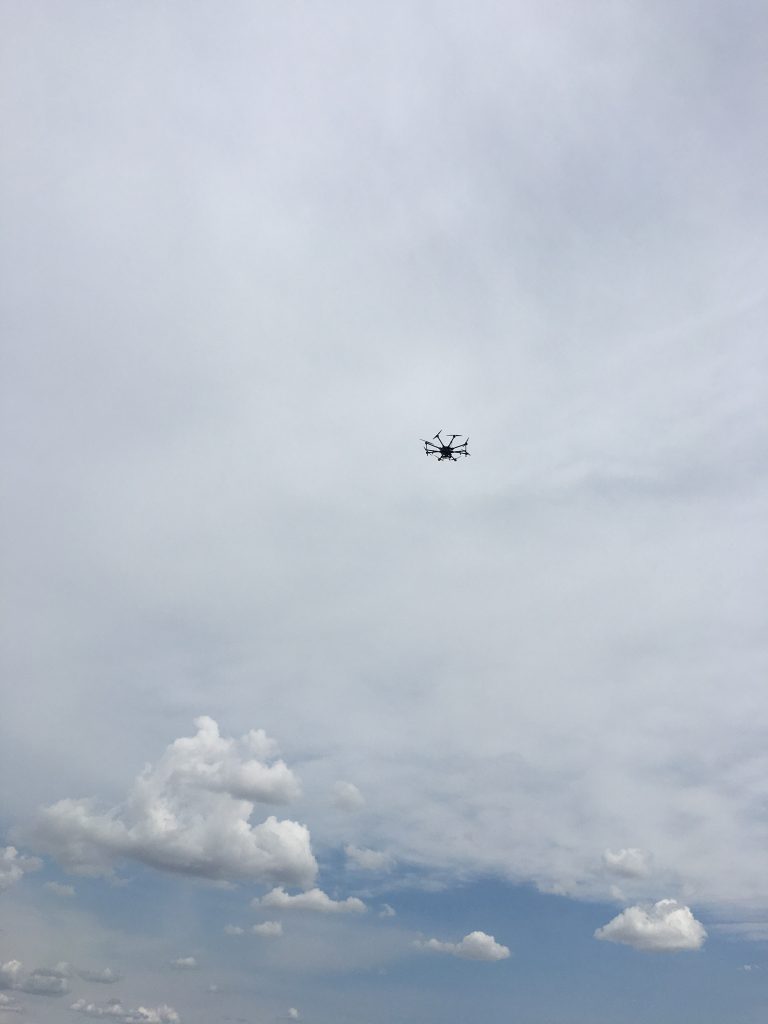Parachute Test Payload Upgrades
Due to unfavorable weather conditions, we were unable to work on the PSCC (Parachute System Control Computer) and instead performed some much needed upgrades to the PTP-1 (Parachute Test Payload, Gen 1).
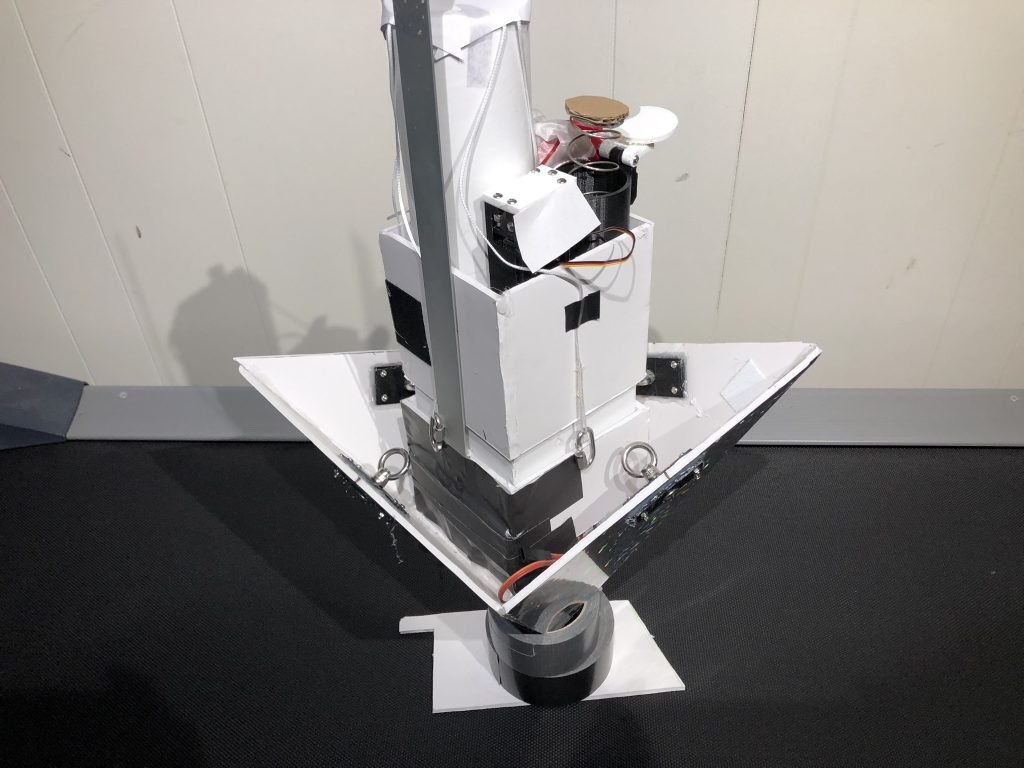
The PTP-1 (pictured above) was built to flight test the parachute system without risking damage to expensive equipment in the event of a parachute failure. To achieve this goal, we had to sacrifice some capabilities. These sacrifices meant that the PTP-1 was capable of flying only a limited number of tests. Also, at the time of the PTP-1 test, the drop system was mounted to the FTS (Flight Test System). This was a inefficient design and after this test the drop system was removed from the payload (read more about this here).
Using new construction techniques developed during the design of the GTP-2 (Guidance Test Payload, Gen 2) we made several modifications to the PTP-1. These consist of:
- Adding a downwards facing camera to record from another angle during flight.
- Installing a new drop system to support the removal of said system from the FTS.
- Replacing the foam board internal electronics mount with a 3D printed version.
- Designing and printing a new parachute segment to increase the PTP’s cargo space for PSCC mounting.

All these upgrades make the PTP-2 (seen above) a more reusable, reliable and modular PTP that will allow us to easily test the PSCC in flight.

